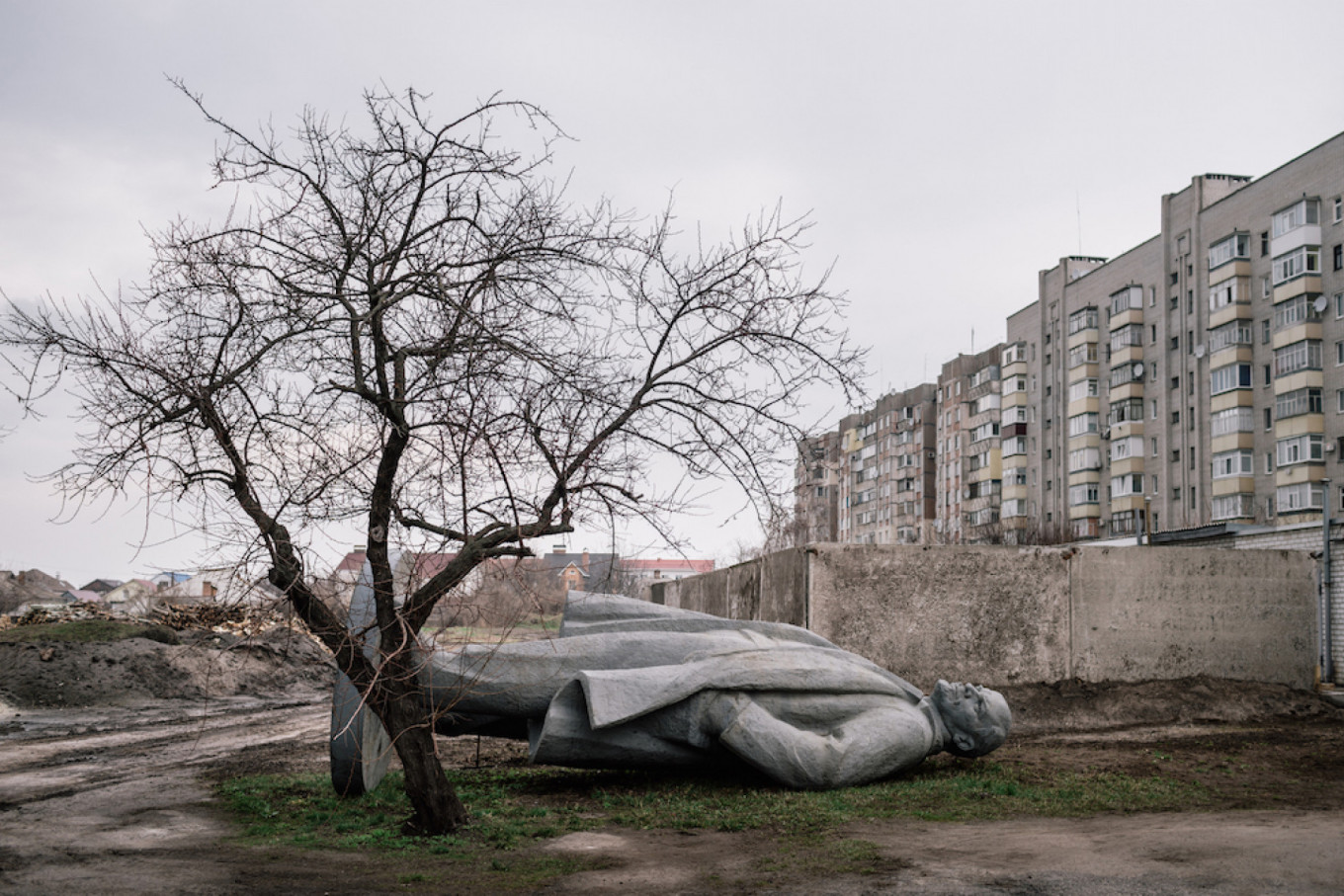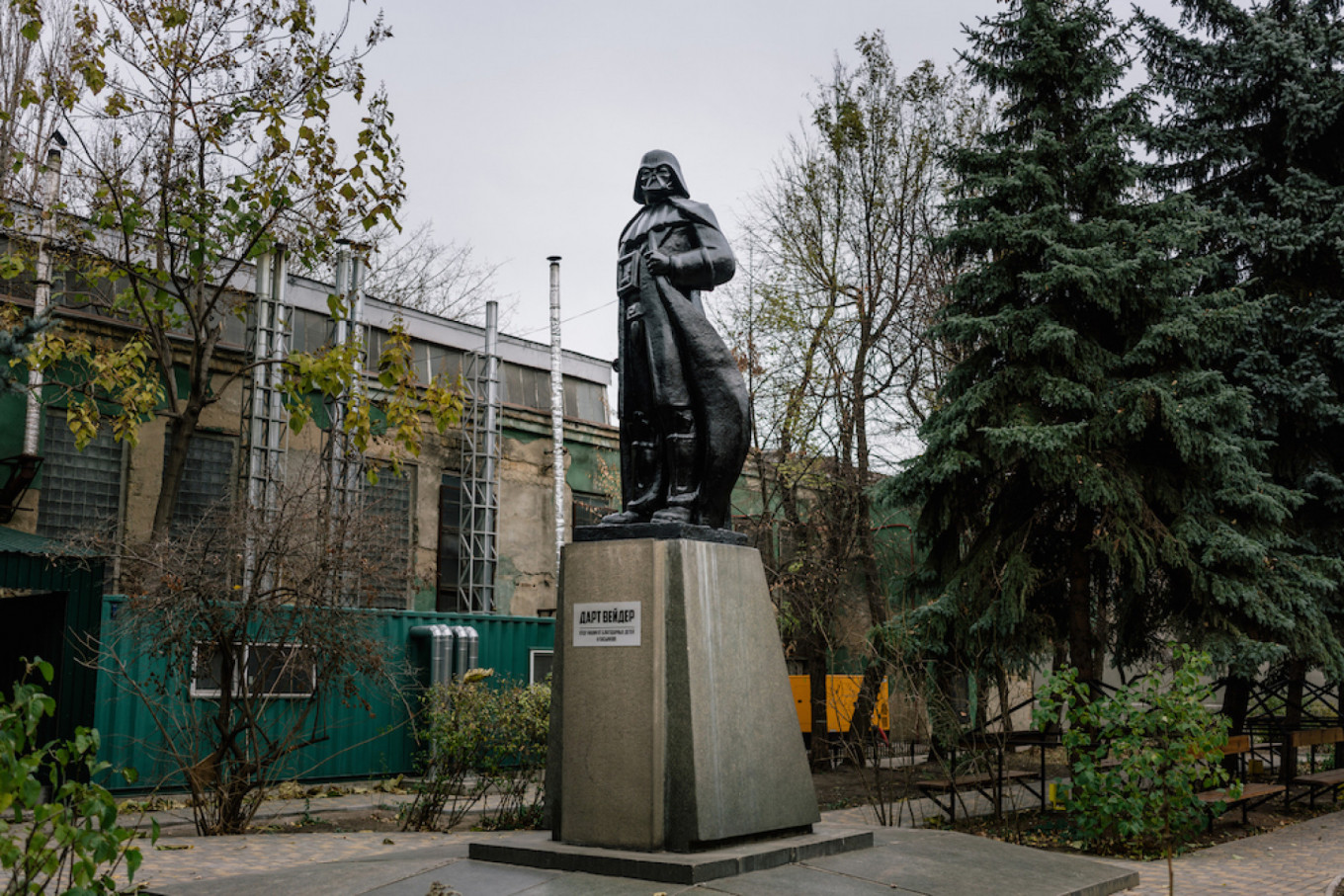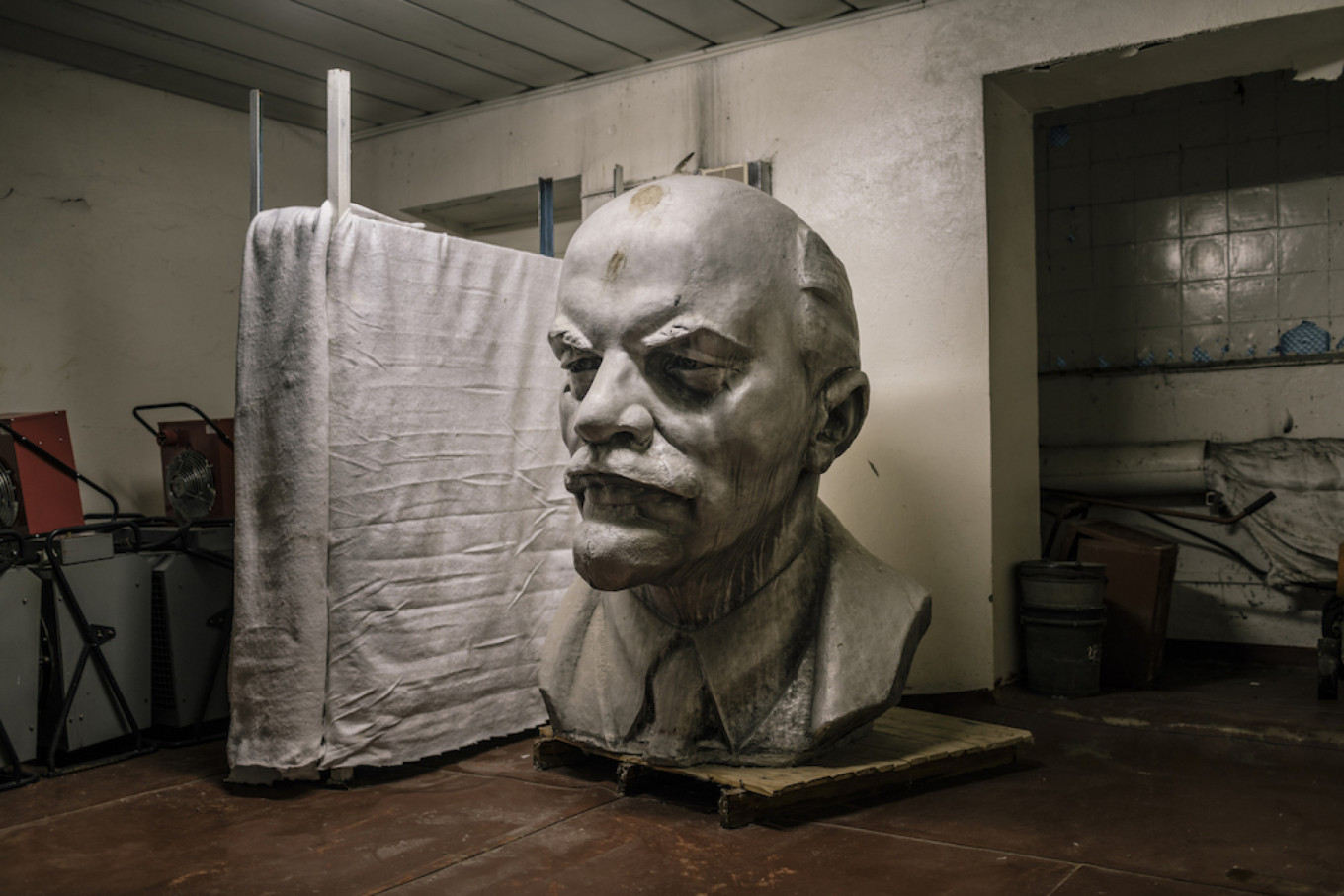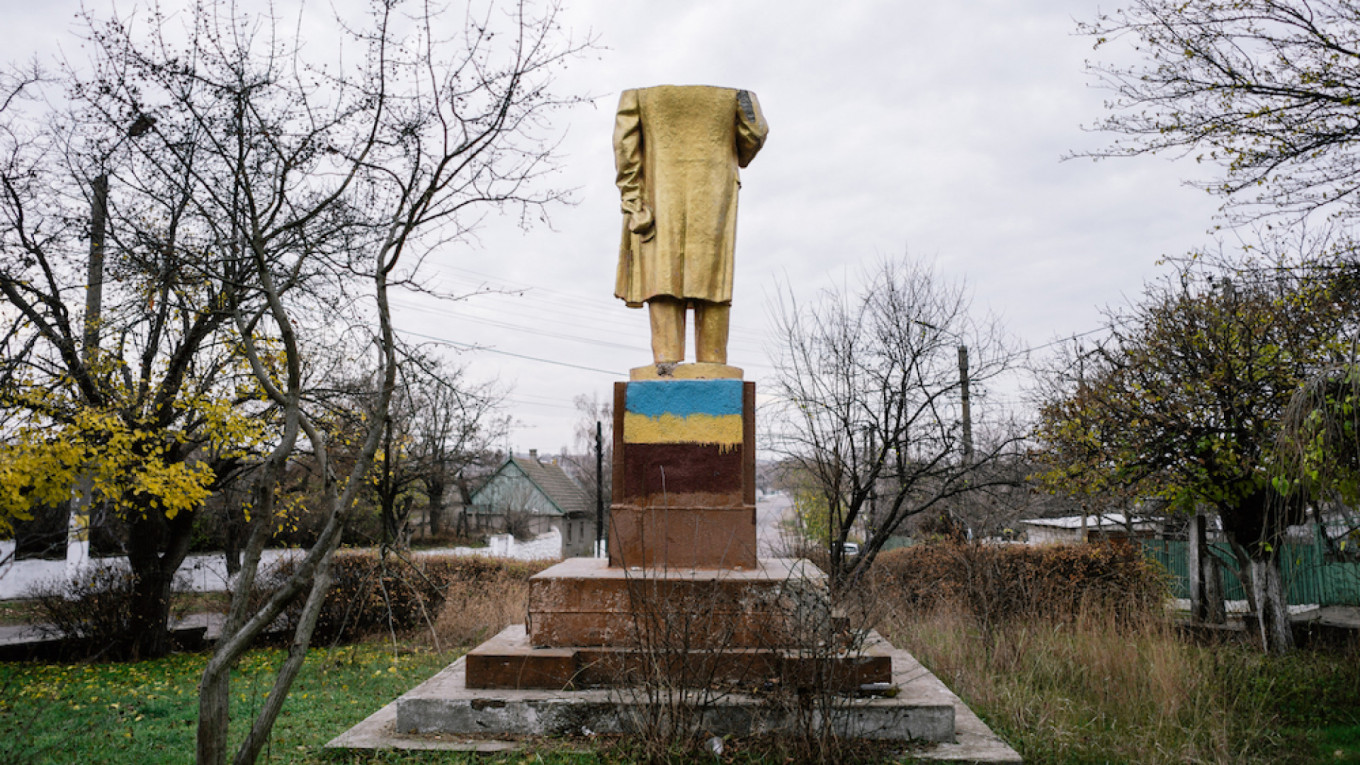The decades following the collapse of the U.S.S.R. have been turbulent for Ukraine, as the nation struggles to forge an independent identity in a post-Soviet landscape. Ukraine’s growing desire to shed its legacy of communism intensified in the wake of the 2013 Euromaidan protests and the 2014 annexation of Crimea, and was solidified by the decommunization laws signed by then-President Petro Poroshenko on May 15, 2015. Under these laws, streets, towns, and institutions with Soviet-inspired monikers were renamed, and all Soviet flags, emblems, and military regalia were banned in Ukraine. This ban extended to any imagery bearing the likenesses of Vladimir Lenin and Joseph Stalin.
On the 5-year anniversary of Poroshenko’s enactment of the decommunization laws, The Moscow Times’ Anna Belokur speaks with the creators of a photo series depicting decommunization in action. Their work asks a practical question: if a 500 lb statue of Vladimir Lenin becomes illegal overnight, where do those 500 lbs of Lenin go?

Niels Ackerman, a Swiss photojournalist who describes himself as “image-obsessed,” first came to Ukraine in 2009. Having been strongly influenced as a teenager by the minimalist aesthetic of the former Soviet Union, he hoped to travel eastwards and find what remained of the former empire’s iconography and architecture. French journalist Sébastien Gobert’s desire to understand the post-communist space led him through the Baltics, Poland, and Hungary before he settled in Kiev in 2011.
Both men would find themselves in a country on the brink of upheaval. As Gobert puts it: “The 2013-14 revolution, Crimea, and the Donbass war changed the country [a lot]. It made it more interesting as a journalist, but also more challenging. I never imagined I would become a war correspondent, but I had to.”
As decommunization took effect in Kiev, the two journalists observed statues of Vladimir Lenin disappearing from public spaces. A simple question was born: where were the statues going? This question would become the basis for the photo series “Looking for Lenin,” in which the pair track down and document the various fates of statues of the fallen leader. The photographs show Lenin as he now exists in Ukraine — salvaged, hidden away, broken, and done over to look like Darth Vader.

When asked to recall the statues they remember most vividly, Gobert and Ackerman’s answers were both reverent and humorous. Gobert speaks of a devoutly anti-communist artist in the Chernihivska oblast who had purchased twenty-odd busts of Lenin and scattered them across his garden. “His plan was to let nature take over in order to show that however powerful a man or a political system may be, nature always prevails. I found it very poetic,” recounts Gobert. Ackerman contrasts this story with a memory from a town in the Kiev oblast, where a newly-illegal statue of two young pioneers was secreted away by local kids (with the permission of the mayor) and reinstalled in the forest, where benches were built and people congregated.
Gobert emphasizes that although it would be simple to hypothesize that statues were destroyed out of anger and saved out of reverence, reality wasn’t so clear-cut. “The artist who laid 20 busts of Lenins in his own garden was 100% anti-communist. The guys who have trashed a Lenin monument face-down in the mud were actually nostalgic for the statue standing in the middle of the town. My strategy was to let people speak for themselves.”

Although these photos deal with Ukrainian decommunization, viewers have pointed out similarities to debates regarding Franco’s legacy in Spain, Ataturk’s legacy in Turkey, and Confederate legacies in the United States. As Gobert notes, these struggles for identity are often tied to a lack of articulated public debate: “Five years on, Ukraine still has not shaped its own answers, despite many Ukrainians bringing their own responses to the issue.”
To a Muscovite, the presence of Lenin is inescapable. He stands in roundabouts, his face graces everything from baseball caps to metro stations, and his mausoleum on Red Square remains open to the public. Ackerman references this prolificity of Lenins, noting that he finds it interesting that Lenin is everywhere in Moscow and yet simultaneously invisible. “Virtually no one cares about it. Meanwhile, in Ukraine, the whole process of decommunization casts a strong light on these monuments, mosaics, names, buildings, etc. which many forgot. I came to the paradoxical conclusion that Lenin and the Soviet past have become more vivid in peoples’ minds in Ukraine, because of the process of decommunization, than in Russia, where everything is preserved but slowly forgotten,” he says.
The “Looking For Lenin” photo collection was published in hardcover in 2017. To learn more or to purchase a copy, click here.
A Message from The Moscow Times:
Dear readers,
We are facing unprecedented challenges. Russia's Prosecutor General's Office has designated The Moscow Times as an "undesirable" organization, criminalizing our work and putting our staff at risk of prosecution. This follows our earlier unjust labeling as a "foreign agent."
These actions are direct attempts to silence independent journalism in Russia. The authorities claim our work "discredits the decisions of the Russian leadership." We see things differently: we strive to provide accurate, unbiased reporting on Russia.
We, the journalists of The Moscow Times, refuse to be silenced. But to continue our work, we need your help.
Your support, no matter how small, makes a world of difference. If you can, please support us monthly starting from just $2. It's quick to set up, and every contribution makes a significant impact.
By supporting The Moscow Times, you're defending open, independent journalism in the face of repression. Thank you for standing with us.
Remind me later.







